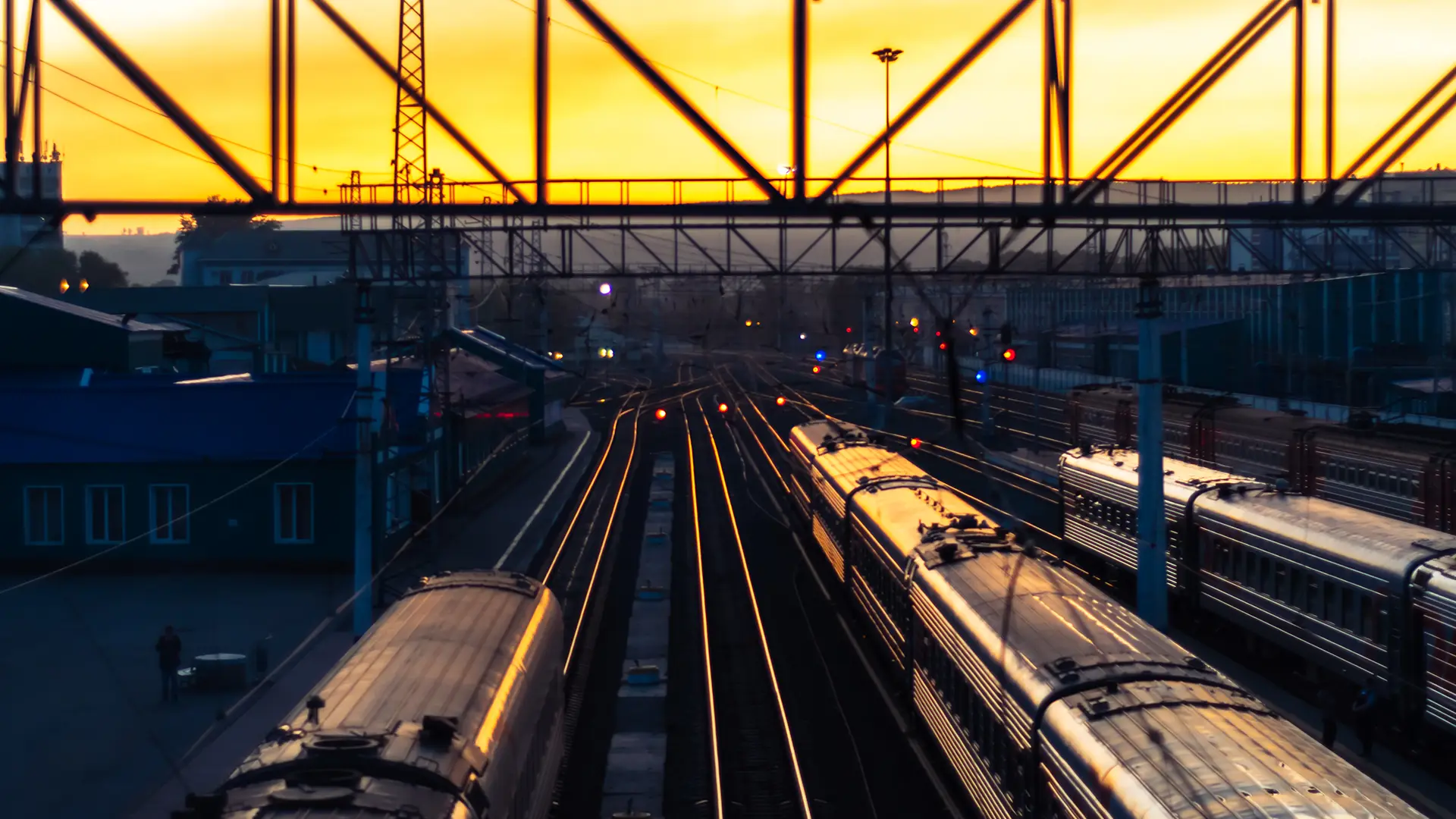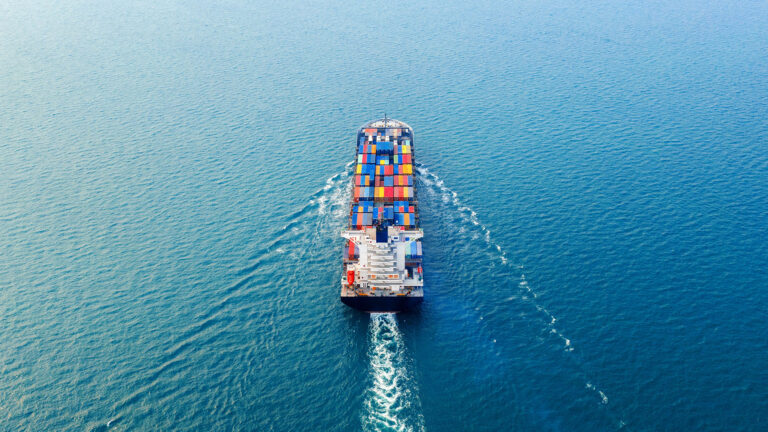The rail industry is a cornerstone of global transportation, encompassing the sale, manufacture, and operation of railway technology. It serves as a critical link in the economic infrastructure of many nations, enabling the efficient movement of goods and people. Rail transportation consists primarily of two segments: freight shipments and passenger services, both of which contribute significantly to economic growth, trade, and connectivity. Industry data is essential for understanding market dynamics and forecasting.
Data from the past is used to analyze industry growth and trends, providing valuable insights into the evolution and performance of the rail sector over previous years.
Today, the global rail network spans over 1.3 million route-kilometers, supporting industries, reducing road congestion, and offering more sustainable transport alternatives compared to air and road transport.
Compared to other modes such as road, air, and waterways, rail offers unique benefits in terms of safety, cost-efficiency, capacity, and environmental impact, especially for freight movement and long-distance logistics.
Let’s take a look at some of the most interesting railway industry statistics of this year.
Global Rankings: Present and Future
The scale and quality of railway infrastructure vary greatly across the globe:
Longest Rail Networks
- United States – Holds the largest railroad network in the world, almost entirely freight-focused.
- Russia – Second in size, with both freight and passenger focus.
- China – Rapidly expanding, especially in high-speed rail (HSR).
- India, Canada, Germany, and France – Major operators with a balance of freight and passenger services.
Quality of Infrastructure
In 2019, Japan was ranked number one globally for the highest-quality rail infrastructure, setting the gold standard in punctuality, safety, and passenger experience.
Regional Market Forecasts
- North America: Average annual market volume of railway technology is forecast to reach €32 billion by 2023.
- Western Europe: Expected to lead in market volume globally due to strong investment in modernization and electrification. Western Europe and China currently hold the largest market share in the railway sector.
- Asia, Oceania, and the Middle East: The collective leader in passenger traffic, with approximately 3 trillion passenger-kilometers traveled annually.
Key trends shaping the global railway industry include rapid expansion of high speed rail, increased investment in infrastructure modernization, and the growing importance of railroad networks for cost-effective transportation and regional development.
Market Size and Growth Trends
The global railroads market was valued at USD 590 billion in 2024 and is projected to hit USD 781.2 billion by 2030, growing at a CAGR of ~4.8%.
- The two major segments of the market are Passenger Rail and Freight Rail.
- Passenger Rail: Dominates revenue, with this segment expected to generate USD 431.8 billion by 2030 at a 5% CAGR.
- Freight Rail: Continues to be critical in North America, Russia, and parts of Asia for bulk goods transport, contributing significantly to overall industry revenues.
- Railway Technology: The rail system market is projected to grow from USD 33.9 billion in 2024 to USD 42 billion by 2029, driven by smart rail solutions, automation, and electrification. The rolling stock market—a key component of railway equipment—was valued at over USD 60 billion in 2024 and is forecasted to see steady growth, with Asia-Pacific leading in regional market share.
A recent industry report offers comprehensive insights into current market trends, growth drivers, and future forecasts for the global railroads sector.
Identifying Key Market Players
CRRC Corporation

- Headquarters: Beijing, China
- Formation: Merger of China CNR Corporation and CSR Corporation Limited (2015)
- Leadership: Largest rolling stock manufacturer globally.
- 2019 Performance: Generated USD 29.58 billion from railway equipment alone. CRRC has significantly contributed to the advancement of railway technology and the expansion of the global railway market.
- Specialization: High-speed trains, locomotives, metro systems, and advanced signaling equipment.
Alstom–Bombardier Merger

- In February 2020, France’s Alstom and Canada’s Bombardier announced the merger of their railway manufacturing units to better compete with CRRC. Both companies made significant efforts to strengthen their market position through this strategic move.
- This strategic move followed the European Commission’s 2019 decision to block Siemens’ takeover of Alstom over competition concerns in signaling and high-speed rail.
Union Pacific Railroad

- Headquarters: Omaha, Nebraska, USA
- Focus: Freight operations across the U.S.
- 2024 Revenue: Over USD $24.25 billion.
- Known for its massive network, linking the Pacific and Gulf Coasts to the Midwest.
Freight Rail Services
Freight rail services are a backbone of the global rail industry, providing a cost-effective and reliable solution for transporting goods over long distances. In the United States, freight railroads such as Union Pacific Corporation and BNSF Railway are industry leaders, moving vast quantities of bulk commodities including coal, agricultural products, and industrial materials across the country.
These railroads are regulated by the Surface Transportation Board, which oversees rates and service standards to ensure fair competition and efficient operations.
Freight rail plays a crucial role in the overall freight movement sector, accounting for approximately 28% of U.S. freight movement by ton-miles, according to recent statistics. This highlights the sector’s significance in supporting the nation’s economy and supply chains.
The rise of intermodal traffic, where shipping containers are seamlessly transferred between trains, trucks, and ships, has further enhanced the efficiency and flexibility of rail transportation. Western Europe has emerged as a key region for intermodal rail, leveraging its dense rail network to facilitate the movement of goods across borders.
Research reports indicate that demand for freight rail services continues to grow, driven by the need for cost-effective, sustainable, and scalable transportation solutions. The ability of railroads to move large volumes of commodities efficiently over long distances makes them indispensable to industries ranging from energy to agriculture.
As the rail industry evolves, freight railroads are investing in new technologies and operational improvements to meet the changing needs of shippers and maintain their competitive edge in the global transportation sector.
Rail Network Infrastructure
The foundation of the rail industry lies in its extensive and sophisticated rail network infrastructure. Maintaining and expanding this infrastructure requires significant and ongoing investments, as it is essential for supporting both freight and passenger operations.

In the United States, the rail network covers more than 140,000 route miles, making it one of the largest and most complex in the world. This vast network enables efficient rail transportation across rural areas and urban centers alike.
Globally, the development of high-speed rail networks has become a major focus, particularly in countries like China and Japan. These nations have invested heavily in advanced railway technology to enhance operational efficiency, safety, and passenger experience.
According to UIC members, the worldwide rail network now extends over 1.3 million route-kilometers, with the United States, Russia, and China leading in total network length.
Recent years have seen a surge in innovation within the rail industry, with new technologies such as digital signaling, predictive maintenance, and automated train control systems being adopted to improve reliability and safety. Investments in infrastructure are not only aimed at expanding capacity but also at modernizing existing lines to support faster, more energy-efficient trains.
As the rail industry continues to develop, the integration of cutting-edge railway technology will be key to meeting future transportation demands and ensuring the long-term sustainability of the global rail network.
High Speed Rail Development
High-speed rail development is transforming the landscape of rail transportation, offering unprecedented speed and efficiency for both passengers and freight. China stands at the forefront of this movement, having rapidly expanded its high-speed rail network to over 29,000 kilometers of track in operation making it the largest in the world.
Substantial investments in infrastructure, advanced rail technology, and a commitment to operational efficiency have fueled this remarkable growth.
Railway companies such as CRRC Corporation are leading the way in high-speed rail innovation, deploying state-of-the-art trains and safety systems that set new standards for the industry. The global market for high-speed rail is expected to continue its upward trajectory, driven by increasing demand for fast, reliable, and environmentally friendly transportation options.
Countries across Asia, Europe, and the Middle East are investing in new high-speed lines and upgrading existing networks to accommodate higher speeds and greater capacity.
Technological advancements, including the exploration of magnetic levitation (maglev) trains, promise to push the boundaries of speed and efficiency even further. These innovations not only reduce travel times but also enhance the overall safety and sustainability of rail operations. As high-speed rail becomes an integral part of modern transportation systems, it is poised to play a pivotal role in shaping the future of global mobility.
Innovation and Technology Trends
The future of the rail industry is being shaped by smart rail technology:
- Railway Telematics: Projected to grow from USD 8.65 billion (2023) to USD 16.14 billion (2033).
- Electrification & Green Energy: Reduction of diesel reliance and expansion of electric and hybrid locomotives.
- 6G-Enabled Smart Railways: Promising automation, real-time safety monitoring, and predictive maintenance. Many modern railway inspection systems now leverage Google Maps for real-time asset tracking and geographic data visualization, enhancing both safety and operational efficiency.
Economic Impact
Railways are more than just transport systems — they’re economic drivers. Various factors are contributing to the global economic impact of railways, including infrastructure investment, technological advancements, and the expansion of rail freight and railroad transportation networks.
In the U.S., railroads contribute around USD 233.4 billion annually to the economy. Economic conditions play a significant role in shaping rail industry trends, investment, and rail traffic. American railroads are vital in supporting the U.S. economy, providing a robust freight transportation network that underpins trade and industry.
The railway network moves 1.6 billion tonnes of freight in the United States and serves 6.9 billion passengers annually. Rail freight is a major contributing factor to India’s logistics sector, driving efficiency and supporting economic growth.
Globally, rail transport is reducing road congestion, carbon emissions, and logistics costs. Railroad transportation plays a key role in reducing congestion and emissions, while supporting sustainable development and efficient movement of goods and people.
Regulatory Environment
A robust regulatory environment is essential for the safe and efficient operation of the rail industry. In the United States, the Surface Transportation Board plays a central role in regulating railroad rates and services, ensuring fair competition and protecting the interests of shippers and consumers.
The Federal Railroad Administration (FRA) is responsible for overseeing safety standards and enforcing compliance across the industry. Major railway companies, including Union Pacific Corporation and BNSF Railway, must navigate this complex regulatory landscape to maintain operational efficiency and profitability.
Globally, regulatory frameworks are evolving to address new challenges and opportunities in rail transportation. There is a growing emphasis on safety, technological innovation, and operational efficiency, with regulators encouraging the adoption of advanced rail technology and digital solutions.
UIC members have highlighted the importance of a supportive regulatory environment in fostering industry growth and enabling the development of modern, resilient rail networks.
As the rail industry continues to innovate and expand, regulatory bodies are working to balance the need for oversight with the flexibility required to implement new technologies and business models. This ongoing evolution is critical to ensuring that railroads remain a safe, reliable, and competitive mode of transportation in an increasingly complex global economy.
Challenges and Regional Contrasts
While some countries lead in punctuality and innovation, others face challenges:
- UK: Rail subsidies have risen from £4 billion pre-pandemic to £9 billion, raising questions about efficiency. For instance, despite increased subsidies, several regional lines have experienced persistent delays and service reductions.
- Germany: Intercity punctuality dropped to 72%, highlighting underinvestment. An instance of this is the frequent disruptions on the Rhine-Ruhr corridor, where outdated infrastructure has led to significant delays.
- Emerging Markets: Struggle with funding modernization while maintaining affordability.
Conclusion
The railway industry is entering a new era of growth, modernization, and technological transformation. With major players like CRRC, Alstom, Bombardier, and Union Pacific shaping global competition, and with regions investing heavily in high-speed, electrified, and intelligent rail networks, the sector is poised to remain a vital driver of economic activity and sustainable mobility.
From Japan’s world-class infrastructure to China’s unmatched high-speed expansion, and from North America’s freight dominance to Europe’s innovation in green rail, the rail industry’s present is strong and its future is on track for even greater impact.
Frequently Asked Questions (FAQ)
What are the key factors driving growth in the railway industry?
Growth is driven by increased investments in infrastructure modernization, expansion of high-speed rail networks, adoption of advanced rail technology, and rising demand for cost-effective and sustainable transportation solutions.
Which countries have the largest railway networks?
The United States has the largest railroad network globally, followed by Russia, China, India, Canada, Germany, and France.
How significant is freight rail in the global transportation sector?
Freight rail is crucial, accounting for a substantial portion of freight movement by ton-miles, especially in the U.S. and parts of Asia. It offers a cost-effective, efficient, and environmentally friendly way to transport bulk commodities over long distances.
What role does technology play in the railway industry?
Technology enhances operational efficiency, safety, and sustainability through innovations like smart rail systems, electrification, predictive maintenance, and automation.
How does the regulatory environment impact the rail industry?
Regulatory bodies, such as the U.S. Surface Transportation Board and Federal Railroad Administration, ensure fair competition, safety standards, and operational compliance, which are vital for maintaining an efficient and reliable rail network.
What are the challenges facing the railway industry?
Challenges include funding modernization, maintaining affordability, regional disparities in infrastructure quality, and adapting to changing passenger behaviors post-pandemic.
How is the railway industry contributing to sustainability?
Rail transportation reduces road congestion, lowers carbon emissions, and offers an energy-efficient alternative to other modes of transport, supporting global sustainability goals.


